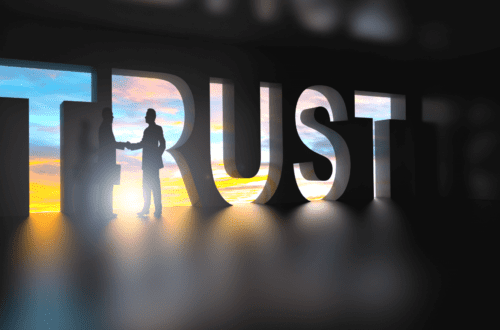What if the help you need is already within reach—even if you can’t afford therapy right now?
Many people in the United States face barriers to mental health support. These include cost, limited insurance, and stigma. This guide offers free mental health resources you can use today.
It includes online tools, apps, and websites. You’ll also find mental health hotlines, text/chat services, and community clinics with sliding-scale fees. Additionally, there are peer support groups and mental health assistance programs.
First, we’ll look at the current landscape. We’ll see how telehealth and apps like Headspace and Calm have made access easier. We’ll also highlight the importance of crisis lines.
Next, we’ll show you where to start based on your needs. For daily care, use a mood-tracking app or free CBT workbook. For urgent help, call a mental health hotline or 911.
Finally, we’ll discuss how to combine these options. Pair online tools with local peer support or short-term nonprofit counseling for added structure.
Throughout, we focus on safe, anonymous, and community-based options. Use this section as your roadmap to find the right blend of resources for both urgent help and longer-term wellbeing.
Free Online Mental Health Resources for Immediate Help
Online mental health resources offer quick support when you need it. They include guided exercises and full workbooks. You can find anonymous apps or websites with clear credentials. The goal is to find free support that meets your needs and keeps your privacy safe.
Anonymous self-help tools and mental health apps
Apps like Moodfit let you track your mood without sharing personal info. MindShift CBT helps with anxiety using cognitive behavioral therapy. PTSD Coach, from the U.S. Department of Veterans Affairs, offers tools for coping with symptoms.
Insight Timer has a huge free meditation library. Headspace and Calm offer free guided practices. Look for mood tracking, CBT exercises, and crisis links in these apps. They help you work on skills privately and keep progress offline.
Evidence-based websites and CBT workbooks you can use for free
Organizations like the National Institute of Mental Health and SAMHSA offer free guides. The Anxiety and Depression Association of America has articles and toolkits on anxiety.
Free CBT workbooks and worksheets are available from clinics and nonprofits. The Centre for Clinical Interventions has structured workbooks for cognitive restructuring and more. Psychology Tools offers free worksheets and premium options.
Using these materials lets you practice proven techniques at your own pace. Workbooks guide you through exercises to track thoughts and manage fears.
How to evaluate credibility and privacy of online mental health resources
Check who created the resource. Look for content from government agencies, medical centers, and universities. Make sure there’s clinical oversight and peer-reviewed study citations.
Read the privacy policy before sharing health information. Reliable services explain how they handle data and if they follow HIPAA for telehealth. Check if an app shares data with advertisers or third parties.
Inspect app permissions on your device. Avoid apps that ask for too much access. Scan user reviews for data problems or misleading claims. Verify affiliations with trusted sources like the VA or NIMH.
| Resource Type | Example Brand or Source | Key Features | Best Use |
|---|---|---|---|
| Anonymous app | Moodfit | Mood tracking, goals, journaling, offline access | Daily mood monitoring and private self-help |
| Anxiety skills app | MindShift CBT | CBT-based exercises, thought records, panic coping tools | Managing anxiety with structured exercises |
| Veterans-focused app | PTSD Coach (VA) | Grounding tools, symptom tracking, crisis resources | Immediate coping for trauma-related symptoms |
| Meditation library | Insight Timer | Large free meditation catalog, timers, community groups | Mindfulness practice and relaxation |
| Government health site | National Institute of Mental Health (NIMH) | Evidence-based guides, research summaries, resources lists | Psychoeducation and trusted information |
| Nonprofit/clinical workbooks | Centre for Clinical Interventions | Structured CBT workbooks, worksheets, step-by-step exercises | Self-guided therapy practice and skills building |
| Practical guides | SAMHSA & ADAA | Toolkits, crisis guidance, peer support directories | Finding local help and short-term coping strategies |
| Privacy check | App store reviews & permissions | User reports, required permissions, data-sharing flags | Assessing mental health privacy before use |
Mental Health Hotlines and Helplines You Can Call or Text
When you need help right away, trained responders are ready to talk, text, or chat. Hotlines are a good first step for crises, referrals, or finding care. Here are key national options available 24/7, along with tips for texting and chatting, and what to expect when you call.
National and crisis hotlines available 24/7 in the United States
The 988 Suicide & Crisis Lifeline helps anyone in emotional distress or suicidal thoughts. Just dial 988 to talk to a counselor.
SAMHSA’s National Helpline at 1-800-662-HELP (4357) offers help for substance use and mental health treatment nationwide.
Veterans can call the Veterans Crisis Line by dialing 988 then pressing 1, or 1-800-273-8255 for veteran support.
The National Domestic Violence Hotline is at 1-800-799-7233 and has a 988 option for safety planning and resources in some areas.
Other helplines include the LGBT National Hotline at 866-488-7386 and the Disaster Distress Helpline at 1-800-985-5990 for crisis support after traumatic events.
Text and chat options for people who prefer non-verbal contact
Texting can be easier if talking is hard. In the U.S., texting 988 connects you to the same crisis network as the phone line.
The Crisis Text Line used to be text-only (text HOME to 741741); check for current chat or text options in your area.
Chat is available on 988lifeline.org and on government sites like SAMHSA and VA. It’s a secure way to chat instead of talk.
What to expect when you call a mental health hotline
A counselor will first check if you’re safe by asking about suicidal thoughts and plans. They decide what support you need right away.
Expect to be listened to, helped to calm down, and get safety plans. Counselors might share coping strategies and offer referrals or emergency help.
Hotlines keep your call confidential, but may share information if there’s a risk of harm. If you’re in danger, they might call emergency services to keep you safe.
Before calling, have your location and a trusted contact ready. Ask about follow-up resources and if the helpline can connect you to local services for ongoing care.
Community mental health services and local support
When you need help, start by looking at what’s available in your town. Use federal and state directories, county health pages, and local nonprofits. This will show you what services are near you.
A quick search can lead you to mental health services, behavioral health centers, and clinics for low-income patients. These places offer help close to home.
How to find low-cost and sliding-scale clinics in your area
Start with SAMHSA’s Behavioral Health Treatment Services Locator. It helps you find federally funded centers near you. Look for Federally Qualified Health Centers (FQHCs) and community clinics too. They often have sliding-scale fees based on income.
Call clinics to ask about fees, income requirements, and waitlists. If you have Medicaid, find out if they accept it. Make a list of questions to ask quickly at multiple clinics.
Community behavioral health centers and public programs
Community mental health centers (CMHCs) offer many services. They have outpatient therapy, medication management, and crisis services. County and state departments run programs for different groups.
Many centers have crisis teams and peer support specialists. Ask about eligibility, hours, and if you need an appointment. They can help in many ways.
Using local government and nonprofit directories to locate services
Check your county health department website and 2-1-1 United Way. State mental health agency pages are also helpful. NAMI affiliates and nonprofits often have up-to-date directories.
Contact university clinics for low-cost therapy. Make sure to ask about hours, intake, and needed documents. Keep notes to compare and act fast when a spot opens.

Mental Health Resources: peer support and support groups
Finding the right community can change how you cope. Peer networks and structured programs offer different paths to recovery. Use this section to compare options and learn how to join safely with confidence.
Many organizations run free and low-cost options. NAMI Connection Recovery Support Groups and Depression and Bipolar Support Alliance meetings pair lived experience with community. SMART Recovery holds both online and in-person support groups focused on substance use. Meetup and Facebook host moderated peer gatherings for grief, postpartum mood disorders, LGBTQ+ mental health, veterans, and caregiver support.
Choose based on what you need most. If you want shared experience and ongoing encouragement, seek out peer support groups led by people with lived experience. If you want structured skills, cognitive tools, or clinical oversight, look for clinician-facilitated offerings. Both formats appear across online support groups and in-person support groups, and many communities blend elements of each.
When you search, include local mental health resources to find neighborhood options and public programs. Community centers, VA facilities, and nonprofit clinics often list recurring group schedules. Online support groups let you join from anywhere. In-person support groups help if face-to-face contact matters for your healing.
Joining safely requires steps that protect your privacy. Verify who moderates the group and ask about confidentiality rules. Attend a trial meeting before sharing sensitive details. Use an anonymous account for online support groups if you prefer. Avoid posting identifying information until you feel secure.
Set clear boundaries about what you will and will not share. Tell moderators if you need content warnings or emotional support during sessions. Know how to exit a group and how to report abusive behavior to organizers. Ask about facilitator qualifications and read participant feedback when available.
Below is a quick comparison to help you decide which group type may suit you best.
| Group Type | Typical Leaders | Primary Benefit | Best For |
|---|---|---|---|
| Peer-led support | Individuals with lived experience | Mutual validation and long-term social connection | People seeking shared stories, emotional support, ongoing community |
| Professionally facilitated groups | Licensed clinicians or trained therapists | Structured techniques, skills training, clinical oversight | Individuals wanting therapy-style tools and moderated risk management |
| Online support groups | Moderators, peer leaders, clinicians (varies) | Convenience, wide options, anonymity | Those needing flexible access or specialized groups not local |
| In-person support groups | Peer leaders or clinicians at local sites | Face-to-face connection, local accountability | Participants who benefit from physical presence and community resources |
Free mental health assistance programs and workplace resources
Many people find free mental health support through work, school, and community nonprofits. These programs offer short-term care and crisis help. Here’s a quick guide to help you get started.
Employee assistance programs (EAPs) and what they typically cover
Employers offer EAPs for quick counseling and resources. They provide 3–6 confidential sessions, crisis help, and referrals for legal or financial issues.
To use an EAP, check your HR materials or payroll notices for contact info. Intake is private, and counselors can help with longer-term care if needed.
College and school counseling services for students
Campus centers offer free mental health support for students. They provide short-term therapy, group sessions, and crisis walk-in hours. Session limits vary, with many offering several sessions each semester.
To get help, call the counseling center, use the online booking portal, or visit during crisis hours. Offices for academic accommodations and student health can help if mental health affects classes.
Nonprofit assistance programs that offer short-term counseling
Nonprofits like Jewish Family Service and Catholic Charities offer short-term counseling. They provide sliding-scale fees, grants, and pro bono hours in many areas.
Contact nonprofits directly to ask about eligibility and wait times. They list intake steps and available programs to help plan for ongoing care.
Conclusion
You now know about free Mental Health Resources you can use. The article talked about apps and tools, websites, and hotlines. It also mentioned clinics, support groups, and college counseling services.
It showed how to pick and use these options safely. If you feel unsafe, call 988 or local emergency services right away. Start with one or two free options, like an app and a hotline.
Keep a list of helplines and resources on your phone. Make a safety plan and share it with someone you trust. This way, they know how to help you.
Free supports can lead to more help in the long run. Keep trying, as many places offer reliable help. Always check who you’re talking to and their privacy policies first. With these steps, you can find ongoing care using community services and other resources.
FAQ
What free mental health resources are available if I need immediate help?
There are several free options for immediate help. Call or text 988 for the Suicide & Crisis Lifeline for 24/7 support. SAMHSA’s National Helpline (1-800-662-HELP) can connect you to treatment referrals. Veterans can use the Veterans Crisis Line (dial 988 then press 1 or call 1-800-273-8255).For nonverbal contact, text HOME to 741741 (Crisis Text Line) or use the chat function at 988lifeline.org. If you’re in immediate danger, call 911. These hotlines provide anonymous, trained support and can help you make a safety plan or connect you with local services.
Which free apps and online tools can I use without sharing my identity?
Several reputable apps and platforms offer anonymous or low-data-use options. Moodfit, MindShift CBT, and PTSD Coach (from the U.S. Department of Veterans Affairs) provide mood tracking and evidence-based exercises. Insight Timer has a large free library of guided meditations; Headspace and Calm offer free sections.Look for offline access, built-in crisis contacts, and CBT/DBT features. Always review app permissions and privacy policies before inputting personal details.
Where can I find evidence-based CBT workbooks and psychoeducation for free?
You can find free resources at the National Institute of Mental Health (NIMH), SAMHSA, and the Anxiety and Depression Association of America (ADAA). The Centre for Clinical Interventions (CCi) offers free CBT workbooks, and Psychology Tools provides worksheets and guidance.University clinics and nonprofit mental health sites often post free, downloadable worksheets for cognitive restructuring, exposure hierarchies, and behavioral experiments.
How do I judge whether an online mental health resource is credible and protects my privacy?
Look for clinical oversight, government or academic affiliations (e.g., VA, NIMH, universities), and citations to peer-reviewed research. Check for clear privacy policies. For apps and telehealth, look for HIPAA statements, transparent data-use descriptions, and minimal required permissions.Read user reviews, verify developer credentials, and avoid sharing sensitive health data with platforms that lack clear protections.
How can I locate low-cost or sliding-scale clinics near me?
Use SAMHSA’s Behavioral Health Treatment Services Locator and 2-1-1 United Way to find federally funded community mental health centers and local referrals. Contact county health departments, Federally Qualified Health Centers (FQHCs), and university training clinics for sliding-scale or low-cost therapy.Call clinics directly to ask about income-based fees, documentation needed, waitlists, and whether walk-ins are accepted.
What services do community mental health centers and public behavioral programs offer?
Community mental health centers often provide outpatient therapy, medication management, case management, crisis stabilization, mobile crisis teams, and peer support specialists. State or county mental health departments may run programs for adults, children, and individuals with severe mental illness.Many centers also offer crisis lines and short-term treatment options.
How do I find and join peer support groups or support groups in my area?
Look for local NAMI Connection Recovery Support Groups, Depression and Bipolar Support Alliance (DBSA) meetings, SMART Recovery groups, Meetup listings, and moderated Facebook groups. Contact local nonprofits, churches, or community centers for schedules.When joining, ask about moderation, confidentiality rules, facilitator credentials, and whether sessions are peer-led or clinician-facilitated.
Should I choose a peer-led group or a professionally facilitated group?
It depends on your goals. Peer-led groups emphasize lived experience, mutual support, and ongoing social connection. Professionally facilitated groups offer clinical structure and skills training (CBT, DBT techniques).If you want practical coping skills or a therapeutic curriculum, choose clinician-led groups. If you seek shared experience and emotional validation, peer-led groups may be a better fit.
What workplace or school resources can provide free mental health support?
Many employers offer Employee Assistance Programs (EAPs) that include several free counseling sessions, crisis consultation, and referrals. Check HR materials or your employer intranet for access instructions. Colleges typically provide free counseling services for enrolled students, with crisis walk-in hours and group therapy options.Contact your campus counseling center or student health services to learn about session limits and how to book emergency appointments.
Which nonprofits provide short-term counseling or assistance programs?
National and local nonprofits often offer free or low-cost short-term counseling. Organizations such as Jewish Family Service, Catholic Charities, local mental health foundations, and community-based clinics may provide pro bono or sliding-scale services.Search local directories, contact nonprofits directly about eligibility and wait times, and ask about any grant-funded programs that cover short-term therapy.
How can I safely participate in online support groups and protect my privacy?
Verify group moderation, privacy settings, and whether organizers require confidentiality agreements. Use an anonymous or separate account if you’re concerned about identity, avoid sharing identifying details (address, workplace), and attend a trial meeting before sharing sensitive information.Know how to report abusive behavior and how to leave the group. Set personal boundaries about what you will disclose and prepare an exit plan if the group feels unsafe.
Can free resources replace long-term therapy?
Free resources are valuable bridges and can provide immediate relief, skills training, and crisis support, but they may not replace long-term, individualized therapy—especially for complex or severe conditions. Combine tools: use apps and workbooks for daily practice, hotlines for crisis moments, and community clinics or EAPs for short-term human support while you pursue longer-term care when possible.
What should I do if I’m unsure where to start?
Prioritize safety first—call 988 or 911 if you’re in danger. For immediate but non-emergency needs, pick one easy resource: a free app for daily coping plus a hotline or local clinic for human contact. Use SAMHSA’s locator or 2-1-1 to find nearby services, and create a simple safety plan with trusted contacts.Start small and combine resources as you learn what helps you most.





